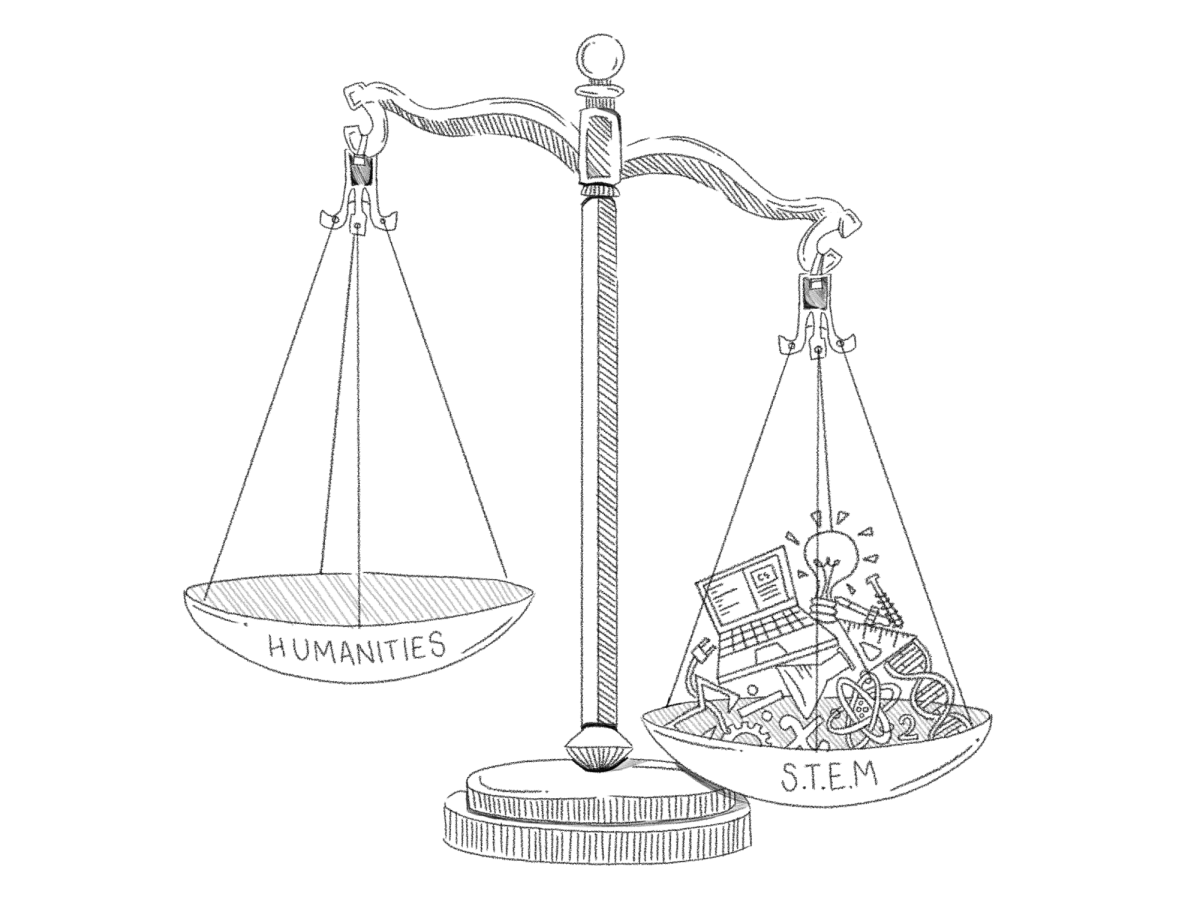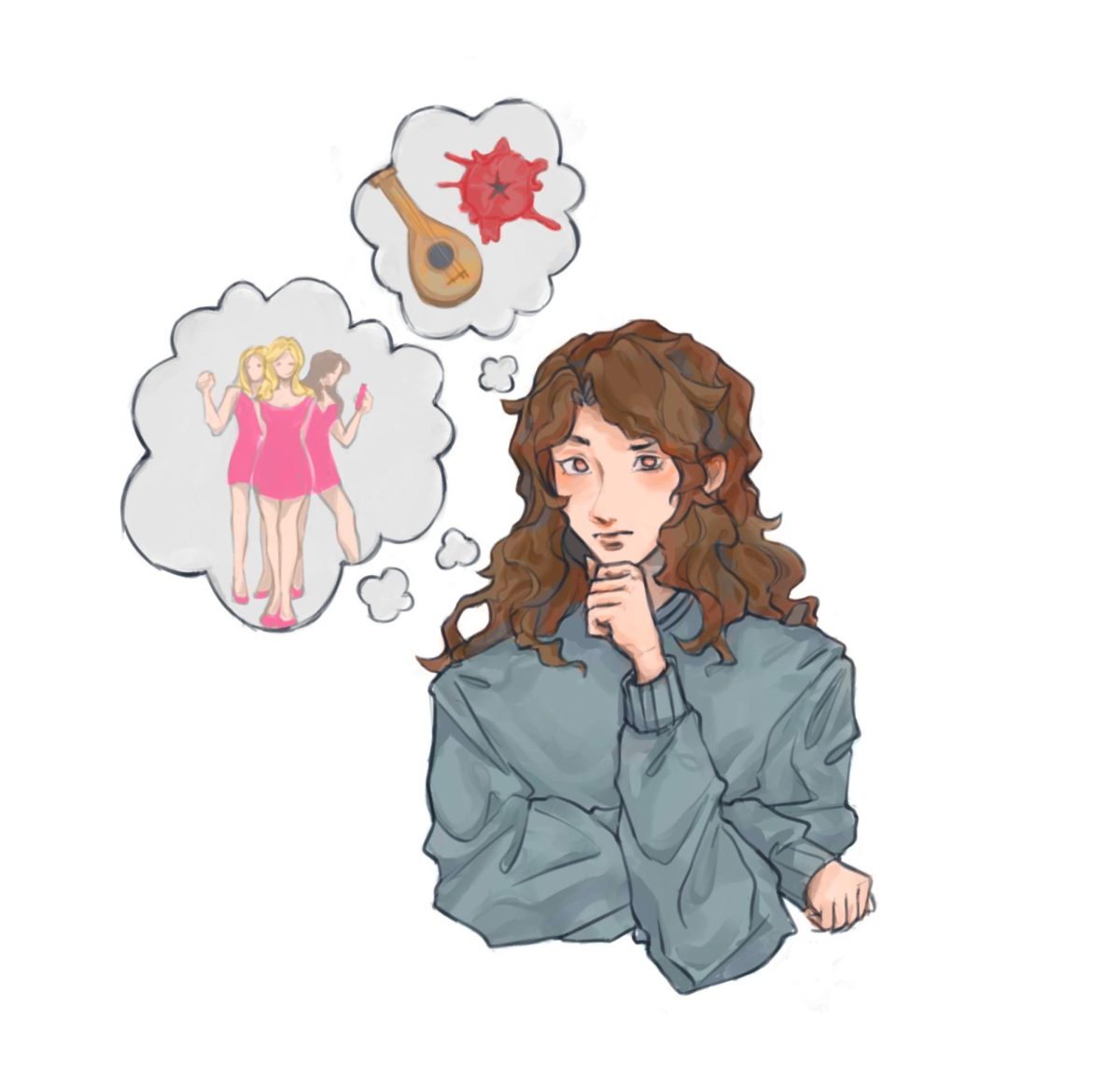The recent Netflix serial drama has garnered a massive following but stirred controversy in the process. Here are the 13 reasons why juniors Gillian Bressie and Kaitlyn Tom feel the series is problematic for mental health. Creative Commons Image: Global Panorama
By Gillian Bressie and Kaitlyn Tom
If you haven’t either seen the show yourself or heard the discussion about it on social media, 13 Reasons Why is a novel turned Netflix series that has swept the internet with it’s timely high school drama. While the story of a teen suicide and her reasons for making that choice is an important one, the execution was problematic. Don’t get me wrong, having a show discussing mental health in high school in the mainstream media is a step in the right direction, however, discussing it in the right way is vital. Here are the 13 reasons why the new Netflix series 13 Reasons Why poses potential problems for both the perception of mental health issues, as well as for kids struggling with mental health.
1. The show suggests that when someone kills themself it has to be someone else’s fault, putting the responsibility on everyone else and not encouraging the individual to seek help.
The entire show focuses on the tapes Hannah, (the main character whose suicide is the central focus of the show) leaves behind after her death. Each tape catalogues a reason why Hannah made the choice she made. The reasons weren’t, “I was depressed, I was unhappy, I had nowhere to turn,” No. The reasons were people who did things to Hannah that she felt contributed to her choice. These tapes point fingers and place blame on those who either bullied her or supposedly played a role in the choice she made. At one point a character actually says, “We all killed Hannah Baker” putting complete responsibility on the people she has blamed in these tapes. While bullying can be a key contributor to suicide, the show fails to address any underlying mental health issues that Hannah may have been struggling with. As a result, it may lead viewers to think that when there’s a suicide it must be someone’s fault rather than recognizing that it’s complex and may be the result of mental health struggles; Which brings us to our next point.
2. It paints a troublesome picture of kids in need of help and never discusses mental illness at all.
Throughout the series, Hannah experiences many traumatic events in rapid succession, but it never mentions that Hannah has any mental illness at all. According to the National Alliance on Mental Illness, 90% of people who commit suicide experience mental illness. The fact that a show that is supposed to discuss suicide doesn’t even begin to talk about mental illness is extremely problematic and is an inaccurate reflection of suicide.
3. It misrepresents being suicidal
In the show’s final episode, Hannah kills herself — quite violently at that. The majority of kids who consider suicide do it because they don’t like themselves. Hannah, however, blames her situation on everyone else and all of the things that she experienced. Bullying often reinforces negative ideas that we have about ourselves, damages our self esteem, and can leave people feeling hopeless and down on themselves. Though bullying can significantly contribute to negative feelings about yourself, ultimately, it is a person’s own displeasure with themselves that leads them to make a choice like that.
Throughout the series, her suicide is presented as something that “happened to her” rather than a choice that she made in a painful time. It doesn’t represent the way that these events impacted her emotionally, and due to the rapid succession it appears as if she came to the choice she did solely because of a series of traumatic experiences. Though those events were horrific and certainly would have contributed to her feeling depressed, the show represents it as if those events alone caused her choice, rather than causing a negative perception of herself which led her to the choice she made. Though her negative self image was likely shaped by the outside influences of the bullying she experienced, her own inner emotional conflict is glossed over and not addressed in depth enough to be an accurate representation of mental illness.
4. It glorifies and romanticizes teen suicide and the aftermath of suicide
The issue with many books that discuss mental health and suicide is that they don’t accurately depict the devastating affect a suicide can have on a community, and they paint the person who committed suicide as a martyr. 13 Reasons Why is just one of many books that do this. It’s the typical “out of suicide, people can grow out of their devastation” message. But this isn’t reality. Just take a look at the suicide clusters that occurred a few years back in Palo Alto; the last thing that suicide gives is hope, and shows like 13 Reasons Why suggest that suicides can help people become stronger, when in reality, one person committing suicide can cause more students to want to end their lives, and create a community where many members develop mental health issues out of the trauma of suicide.
5. The majority of the show sends a terrible message to troubled teens: If you’re ignored while you’re alive you will be remembered and beloved if you make the choice to end your life
The first scene of the first episode shows Hannah’s locker covered in flowers and kind notes as well as a table with her photo on it covered in flowers. This goes against every common suggestion from mental health professionals because it actually encourages teen suicide. This tells teens who are already contemplating that they’ll be remembered and loved even if they weren’t during their life.
6. It doesn’t acknowledge that not all suicides have “reasons”
The show makes it seem as if Hannah Baker’s actions are in direct response to the bullying and harassment that she endured. The rapid succession of the show and the emphasis on blame makes it seem as if it is the events themself that are a cause for her choice and not the way that the events made her feel. By focusing on the bullying itself and less on her personal internal conflict, it simplifies the “reasons” in order to pinpoint culpability on a set of people. That isn’t to say that bullying isn’t a major cause of depression in teens. The issue is that the show fails to mention that depression and mental illness can lead people to feel helpless regardless of whether or not they have endured bullying, assault or harassment.
7. The dramatization of everything makes suicide and mental illness feel more like fantasy and less like a reality
As two people who have both struggled with mental illness and who’ve either experienced suicidal ideation first hand or had friends commit suicide, we’d like to see more thought being put into a highly publicized show that is supposed to speak about the reality of suicide. Suicide and mental illness should be talked about, but not in a manner where it is dramatized so much that it seems more like a fantasy than a reality. It lacks the typical interactions of a high school student, and suggests that for someone to commit suicide, they must go through a truly traumatic situation. The fact that this show is one of the only of it’s kind only worsens this issue. The show turned an important issue into another version of Pretty Little Liars only with a heavier subject.
8. It tells teens that people being nice could have changed things.
There are no magic words or gestures that can make a suicidal person want to live. Teenagers understand and acknowledge signs of someone being depressed or suicidal, but they shouldn’t think their kindness can “fix” anyone or solve their deep rooted struggles. Reminding teens to think about the consequences of their actions is positive, but promoting a message of “maybe if you all were nicer something could have been different” is a deeply problematic. It offers room for people to blame themselves and others for suicides. Chances are being nice to someone won’t make them want to be alive. The real important message is that you never know how deeply small actions can affect others.The show does tell us that we should be more thoughtful about how small actions can impact one another in ways we don’t often intend and therefore we should strive to be kinder and more considerate. That being said, it presents an inaccuracy that when someone is struggling with mental health issues such as depression, if people were just “nicer” the suicide could be prevented. This is not always the case.
9. It discourages teens from seeking help
When Hannah goes in to see her counselor after she is sexually assaulted, the counselor tells her that the perpetrator is a senior, he will graduate, and she won’t have to worry about it anymore. The counselor offers no help whatsoever. Presenting counselors in this way hardly encourages teens in need of assistance to reach out to adults who they should see as resources.
10. It tells troubled teens that blaming others for their death is a legitimate way to get revenge against those who have wronged you
Hannah forces them to live with guilt in order to pay for her mistreatment. The show suggests that suicide is a valid method of revenge, which could encourage kids who have been bullied to make that choice for themselves. The entire show follows Clay Jensen’s response to Hannah’s tapes as he tries to live with his guilt. The show looks at suicide as revenge more than anything else which sends problematic messages.
11. The kids are more concerned with their culpability than their actual remorse
Throughout the majority of the show, the classmates who were deemed responsible in Hannah’s tapes run around trying to cover themselves and make sure that the incriminating tapes don’t get out to ruin their futures. Only a few of them exhibit any real guilt over the role Hannah claims they played in the decision she made both of whom threaten to make the same choice on multiple accounts.
12. Their messages are inconsistent
A character with visible cutting scars on her wrists says, “It’s what you do instead of killing yourself. Suicide is for the weak.” Even if this was intended to represent an individual who is deeply suffering, there is no further discussion of her comment to explain why it is problematic. Similarly, the show plays triumphant music as Hannah leaves the school after deciding to end her life; an event that should hardly be presented in a celebratory fashion.
At the end of the series there’s an episode called “Beyond the Reasons” in which the cast, producers, as well as mental health professionals share a message of hope to kids who may be struggling. Unfortunately, this message is nothing like the one conveyed by the entire series itself.
13. Its triggering content has already promoted suicide negatively
It is ill advised by mental health professionals to show the graphic detail of a suicide or to even show the suicide itself at all. 13 reasons why decided to ignore this suggestion and depict the scene in all its bloody gore. Not only is this triggering, its practically instructional. According to a conference for mental health professionals, four teens have already attempted suicide using the same method as Hannah uses in the show to kill herself, and two of those teens ended their lives. It is these unintended consequences that arise when heavy subjects are handled poorly and carelessly for the purpose of garnering viewership.
The nature of the show, as it was designed to binge watch, presents graphic scene after graphic scene leaving teens little time to process this content. Staying up watching heavy sexual assault and self harm scenes and then getting little sleep can be really harmful and dangerous for teens.
While we don’t recommend watching the show because of its ill representation of mental health issues and its triggering content, we understand its popularity and know that many will choose to watch the show regardless. If choose to do so, please consider not binge watching in a way that compromises sleep and be sure to talk it over with peers and adults so you are not viewing it in a vacuum. If you find that the content is upsetting or triggers you in any way, please know that the Menlo counselors are available for support at any time.








